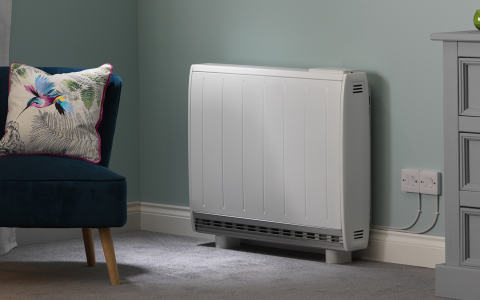

Dimplex News
Stay Updated with Dimplex: Innovations, Insights, and Industry News
Welcome to the Dimplex news hub, your go-to source for the latest updates, innovations, and insights from the world of energy-efficient heating systems and hot water solutions. Whether you're looking for the latest product launches, industry trends, or tips for improving energy efficiency with your central heating system, we keep you informed on how Dimplex is helping drive sustainability and comfort across homes, businesses, and commercial spaces.

Update your bathroom in a flash
The thought of a bathroom re-model can be daunting, but with the right technology and styling, you can update your tired looking room into a tranquil paradise in next to no time.

The Future Homes Standard: Is 2023 the new 2025 (for a 75-80% carbon emission reduction)?
The Ten Point Plan may have just announced intentions for an earlier introduction of the Future Homes Standard than previously planned. Picked up by industry and the media alike, the initial announcement included details of moving the 2025 Future Homes Standard date to 2023. So, if 2023 is the new 2025, how can we prepare?

Election 2019: Energy Inefficiency, Fuelling the discussion
The election that will take place on Thursday has been framed as the most important general election in modern history. The preceding campaign has been characterised by countless divisive issues from Brexit to public spending. In an election where unity seems sparse, matters that cause the major political parties to coalesce around some semblance of the same objective are almost cause for celebration.

Brrrrrr-acing for Winter
The shortest day and longest night of the year will fall on December 21st., marking the winter solstice and the start of the coldest of the seasons. While other definitions place the start of winter as December 1st, temperatures have been falling steadily since the summer and the solstice is a timely reminder that heating indoor spaces will only become tougher as we journey into the new year.

Lower Your Carbon Footprint With Our New Heating Collection
New for this winter, Dimplex has added to its popular collection of oil-free radiators with the new Eco Column range (ECR).
Ideal for rooms where supplementary heating is required during the cold winter months, such as conservatories, the oil-free collection provides instant heat at the touch of a button.

Heat pumps, heat networks and direct electric heating - should Government mandate where they are used?
During the recent Future Homes Standard consultation, Government showed their support for using heat pumps, heat networks and direct electric heating within future residential developments. But what is the best application for each of these solutions?

Getting ready for 2020 compliance
The consultation for the Future Homes Standard, including Government’s proposal to update Approved Document L and Approved Document F during 2020, has closed. The final version, taking into account the feedback from industry on the initial document, is likely to be published mid-2020 and become the new standard in the closing months of this year.

What Building Regulations are changing during 2020?
2020 has been dubbed the year of change for the built environment, with Government keen on updating compliance targets for new and existing dwellings to enforce change in industries HVAC strategies.

Amending the Planning and Energy Act - what could this mean?
During the recent Future Homes Standard consultation, Government published their intentions to amend the Planning and Energy Act 2008 during 2020 or 2025 - but what does this mean?

Proposed compliance metrics for Part L 2020
Government’s Future Homes Standard consultation closed early last month, leaving industry with no doubt that HVAC specification is about to change. One of the biggest changes is the proposal of four compliance metrics for new developments which will impact new HVAC strategies.

Preparing HVAC specification for Option 1 and Option 2
For the 2020 update to Part L of the Building Regulations, Government decided to ask industry how challenging they wanted the uplift in energy efficiency standards to be. They did this by offering two options during the recently closed consultation. Both will impact HVAC specification – but how do you prepare for either one becoming law?

Kaluza, EDF and Dimplex Join Forces to Cut Carbon through Smart Heating in the UK
London – Wednesday, 11th March 2020 – Kaluza, OVO Group’s intelligent energy platform, and EDF announced today that they are trialing an innovative solution to the UK’s heating challenge in the transition to a zero carbon grid. Over 100 internet-connected storage heaters from Glen Dimplex Heating and Ventiltion (GDHV) are being intelligently controlled by Kaluza, helping to warm homes with electricity that is less costly and carbon intensive.











